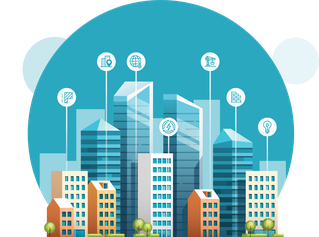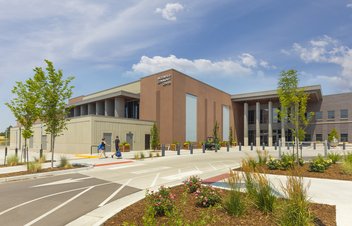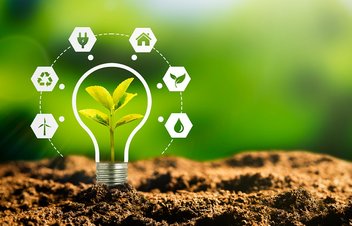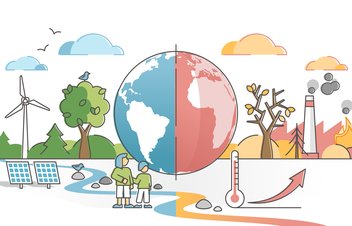Delivering on Our Commitment to a Sustainable Future
Wells views sustainability as a shared responsibility with our team, design and construction collaborations, and communities. Our sustainability efforts focus on key drivers to reduce our environmental footprint while supporting the well-being of our people and the planet.

Waste Reduction & Reuse
Improving waste management by partnering with vendors to identify opportunities for reduction and diversion. Team members are actively engaged in recycling, reuse, and responsible disposal. Standardized sorting, sustainability training, and consistent tracking support continuous improvement across all facilities.

Energy Efficiency
Facility-wide audits identify opportunities to reduce energy use and costs, promoting energy-saving habits through training and awareness, building a culture of accountability and performance.

Water Reduction & Reuse
We practice water conservation through internal awareness training and standardized reuse practices. Tracking usage across facilities helps us set goals to reduce consumption and improve efficiency.

Mix Development
Our innovative mix designs are engineered to minimize cement content and reduce environmental impact. By leveraging advanced admixtures, cutting-edge technologies and supplementary cementitious materials (SCMs), we optimize for sustainability, durability and performance — driving continuous improvement and delivering measurable results.

Training & Education
Targeted programs embed sustainability into daily work, empowering team members to drive environmental progress and foster a culture of shared responsibility.
A Greener Future
- Our manufacturing locations focus on optimizing mix designs by incorporating supplementary cementitious materials (SCMs) where possible, reducing embodied carbon while maintaining required strength and durability.
- We invest in extensive research and development to drive innovation in both our products and manufacturing processes.
- We conduct regular energy audits at all our locations to identify opportunities for improving energy efficiency and reducing consumption.
- A dedicated sustainability manager leads our strategy and ensures data accuracy for developing location-specific LCAs and EPDs, supported by a company-wide focus group that promotes sustainability and best practices.

Environmental Product Declarations
Being transparent helps our design, construction and development clients feel confident they're building for a greener and healthier world when they partner with Wells. We believe in transparency in our design and manufacturing process, and we openly share current environmental product declarations (EPDs) upon request. Contact our team to get the conversation started on EPDs for your project.
Identifying Better Ways to Build
At Wells, we help project teams create more sustainable building solutions by leveraging innovative approaches that significantly lower material use and embodied carbon. We have building solutions that can reduce cement usage by up to 65% compared to traditional methods. By designing lighter, more efficient systems, we also minimize the structural demands needed to support the building enclosure — helping create buildings that are not only stronger, but also more responsible for the world we share.

Understanding Environmental Impact
The Green Benefits of Prefabrication
Choosing a sustainable building solution involves more than just energy and material efficiency — it’s about long-term performance. Prefabricated concrete stands out for its durability, resilience, and recyclability, making it a smart choice for spaces built to last.
Many sustainability assessments stop at cradle to gate — evaluating the environmental impact only up to the point a material leaves the factory. While this is important, it doesn’t tell the full story. Prefabricated concrete demonstrates its greatest sustainability advantages when evaluated cradle to grave — from raw material sourcing through production, installation, decades of service life, and eventual reuse or recycling.
Its durability, minimal maintenance requirements, thermal performance, and potential for reuse at the end of life all contribute to a significantly lower environmental impact over time. When you look beyond just the initial carbon footprint and consider the full lifecycle, prefabricated concrete consistently delivers long-term sustainability that many other materials simply can’t match. Learn more about the lifecycle advantage of prefabricated concrete.
Prefabricated concrete structures are built to last. With lifespans that often exceed 75 years, precast components significantly reduce the need for replacement, repair, and maintenance. This longevity not only preserves resources over time but also contributes to lower embodied carbon across a building's lifecycle — supporting a more sustainable built environment.
See how this long-term value comes to life in our featured longevity projects: American Family Field, Chester Fritz Auditorium, and Aurora Justice Center.
When it comes to climate-conscious construction, resiliency is key. Prefabricated concrete delivers exceptional strength and stability, making it ideal for withstanding extreme weather events, seismic activity, and temperature fluctuations. Precast structures outperform traditional building materials under stress, reducing long-term environmental and financial costs tied to post-disaster recovery and repair.
At the end of a building’s life, prefabricated concrete offers sustainable options far beyond demolition. Elements, like double tees, can often be deconstructed piece by piece, allowing for reuse in future structures or repurposing for infrastructure applications. If reuse isn’t feasible, the components can be processed and crushed to recover valuable materials such as aggregates and steel reinforcement for recycling. This flexibility not only reduces landfill waste but also supports a circular construction economy, giving second lives to the material.






